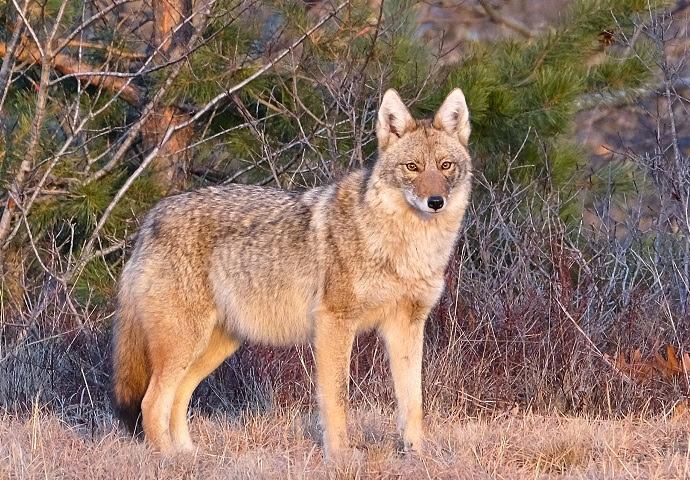Understand coyote vocalizations

Detailed sounds
Types of Coyote Vocalizations:
1. Growl. This vocalization holds no mystery. A growl is used as a threat, specifically for something within close range.
2. Huff. This is the expulsion of air through the nose and mouth, and is also used as a high-intensity threat in close proximity. Huffs are used when there’s bickering over carrion.
3. Woof. This vocalization is made as both a low-intensity threat and as an alarm. It’s a sound made when a coyote is startled and unsure of exactly what is happening.
4. Bark. The bark is a long-distance threat or alert of low to medium intensity.
5. Bark-howl. This is when the coyote gets serious about a threat. The bark-howl is used as a long-distance high-intensity threat or alarm. It starts with a bark and blends into a howl.
What is interesting about the bark and the bark-howl is that research suggests that the varying intensity and frequency of barks could contain different information.
Howls stably convey information for distances of at least one kilometer. Barks, on the other hand, rapidly attenuated and did not appear suitable for transmitting information.
6. Whine. This sound is used to express submission and is usually given by a subordinate coyote to a more dominant coyote.
7. Yelp. The yelp takes the whine up a notch and represents high-intensity submission. However, it can also be a response to being startled. As is the case with several other of these vocalizations, this categorization shows that coyote communication is more of a gradient.
8. Woo-oo-wow. This is the greeting song of coyotes, and is used during high-intensity greeting displays. The vocalization modulates in frequency and amplitude as a coyote’s motivation shifts.
9. Lone Howl. The lone howl is just what you probably already know it to be: a howl by a single coyote, which is often started with a series of barks and can distinguish individuals.
10. Group Howl. A group howl is sent up when two or more coyotes come together after being apart, or it could be given as a response to the howls of distant coyotes as a way of giving out location information to any listeners.


nockedup Massachusetts outdoors.